|
| Getting
to Prague |
| By plane |
| Prague international
airport Ruzyne is located about
20 km from the city centre. Depending
on the traffic it generally takes
30 to 60 minutes to get to the
centre: |
|
|
By
taxi:
The most comfortable method
to reach the city will cost
about 700 CZK (30 USD) |
|
|
By
Airport Express buses:
They operate every 30 minutes.
The first one leaves the
airport at 4:40, the last
one at 21:10. The price
is 45 CZK per person and
the tickets are available
at the driver. They will
take you to the metro station
Nadrazi Holesovice (metro
line C). |
|
|
By
Cedaz buses:
These buses operate from
5:30 to 21:30 every 30 minutes.
They will take you to the
metro station Dejvicka (metro
line A) or to the city centre
to the metro station Namesti
Republiky (metro line B).
The fare is 90 CZK per person. |
|
|
By
city bus and subway:
Bus #119 takes you to the
metro station Dejvicka (metro
line A), bus #100 brings
you to the metro station
Zlicin (metro line B). |
|
| By train |
Prague has
two international train stations:
Hlavni nadrazi (central station,
abbreviated Praha hl.n., connection
by metro line C); and Praha-Holesovice
(Holesovice station, connection
by metro line C).
Eurocity trains connect Prague
to Berlin (5 1/2 hours), Vienna
(4 1/2 hours) and Budapest (6
1/2 hours). |
| By car |
Highway connection
from Prague to border of the Czech
Republic is available in two directions
– southeast and southwest.
South-west highway (number D5,
international E50) leads through
Pilsen (Plzen) to Germany. Riding
from state border to Prague takes
about one and half hour (160 km).
South-east highway (number D1)
leads through Brno to Bratislava
in Slovakia. It offers a good
connection to Vienna, Budapest
and all traffic from east directions.
It takes two and half hours from
the Czech-Slovak border to Prague
(more than 250km). |
| Road distances
from Prague to some European cities |
|
|
Amsterdam |
970
km |
|
Berlin |
350
km |
|
Bern |
960
km |
|
Brussels
|
910
km |
|
Bratislava |
323
km |
|
Budapest |
550
km |
|
Copenhagen |
750
km |
|
London
|
1
370 km |
|
Madrid
|
2
400 km |
|
Munich
|
360
km |
|
Moscow
|
1
900 km |
|
Paris
|
1
050 km |
|
Rome
|
1
290 km |
|
Warsaw
|
630
km |
|
Vienna |
300
km |
|
Zurich |
670
km |
|
| By bus |
The main bus
station for international buses
in Prague is Florenc, Krizíkova
(metro lines B and C). It is located
east of the city centre.
Eurolines connects Prague to major
European cities. They mostly leave
the main bus terminal Prague-Florenc,
some of them depart from Nadrazi
Holesovice (metro line C). |
| Inside
Prague |
| Public Transportation |
| The main means
of public transport is the underground
railway /the metro, with complementary
systems of bus, tram and railway
transport. The ticketing system
of the public transport is as
follows. |
| Public transport
tickets: |
|
|
75
min |
CZK
20 / USD 1 |
|
1
day (24 hours) |
CZK
80 / USD 4 |
|
3
days (72 hours)
|
CZK
220 / USD 9 |
|
7
days (168 hours)
|
CZK
280 / USD12 |
|
| Taxi Service |
| The main means
of public transport is the underground
railway – the metro, with
complementary systems of bus,
tram and railway transport. The
ticketing system of the public
transport is as follows. |
| Average taxi
service rates: |
|
|
One-off
boarding charge |
CZK
34 (USD 1,7) / drive |
|
Journeys
within city boundaries
|
CZK
25 (USD 1,2) / km |
|
Waiting
time |
CZK
5 (USD 0,4) / minute |
|
| Always check
that the registration number,
company name and the price list,
including the basic rate, kilometer
rate and one-minute-waiting rate,
displayed on both front doors
of the cab. These prices must
correspond with the prices set
on the meters in the cabs. If
possible, order your taxi with
one of the following non-stop
dispatching offices where the
information on fares is available
in advance. |
| Hotels |
| Prague
has large capacities in
a wide variety of accommodation
facilities, ranging from
luxurious five-star hotels
to economical two star hotels,
and to student hostels.
Many of the hotels are easily
accessible from the conference
venue – within 5 -
20 minutes by underground,
bus or tram. The prices
are between USD 55 –
65 for two star hotels,
and between USD 10–
30 for student hostels.
|
| Check
the following links for
further information: |
|
|
| Sightseeing |
| Prague, city
of hundred spires, is the heart
of Europe. The capital of the
Czech Republic is a city of more
than one million people, spreading
over almost 500 square kilometers.
Prague enhanced its historically
strong ties with other cities
in Central Europe, and has gradually
been gaining a continuously improving
position within the continental
structure of big cities. |
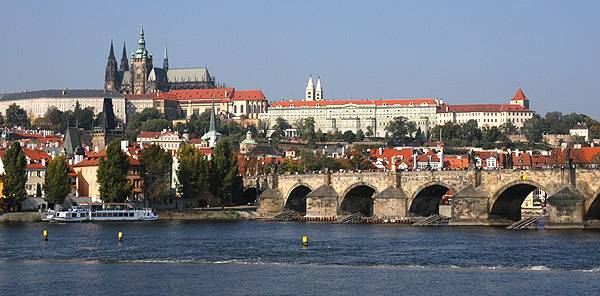 |
| Situated on
both banks of the Vltava river
is a beautiful city with a rich
history. Thanks to its location
in the centre of Europe, Prague
has always been an important crossroads
of trade and culture. Prague belongs
to the architecturally unique
European towns. |
| Castle |
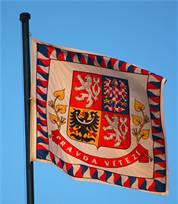 |
|
|
The
dominant feature of the
city is Prague
Castle, which houses
the gothic St. Vitus's Cathedral.
The castle had been the
seat of Czech kings since
1087, until 1918 when it
became the seat of presidents
of the Czechoslovak Republic,
and since 1993 it has been
the seat of the president
of the Czech Republic. Prezident
of the CR is a Professor
of economy and his participation
is expected on the EURO
XXII.
|
|
| With a widely
opened pro-market economy, stable
democratic government, stable
currency working skills of the
people, this country provides
a great opportunity to host a
conference in order to meet scientists
and business people from all over
the world. |
| Prague, as
the proposed venue for this conference,
provides all the necessary facilities
and services. The city with its
cultural and architectural interests
helps to attract more participants. |
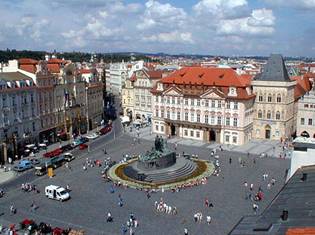 |
| Weather |
| Prague is a
city with four distinct seasons
and a fairly continental climate.
Summers are hot, winters are cold.
The normal summer temperature
varies between 23°C (73°F)
and 29°C (84°F). |
| Time zone |
| The Czech Republic
is on Central European Time -
Greenwich Mean Time (GMT) plus
1 hour. From April to October
is summer time, i.e. GMT + 2 hours. |
| Money |
The official
currency in the Czech Republic
is Czech Crown (CZK) - it is usually
expected in shops and restaurants.
The official rates: 1 Euro = approx.
29 CZK, 1 USD = approx. 23 CZK.
Please never change money in streets,
use banks or official exchange
offices.
The Czech Republic became part
of the European Union on 1st May
2004. Furthermore, it is expected
the Czech currency (CZK) will
be replaced approximately 5 years
later by the Euro. |
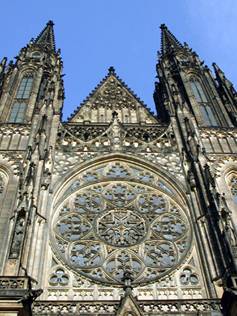 |
| Sights |
Prague is certainly
a fascinating place to visit,
with sights including beautiful
landscapes and architecture ranging
from Art Deco styles to gothic
designs. Prague is a great walking
city and we recommend that you
bring comfortable shoes and hit
the cobblestones.
The main sightseeing areas of
Prague are separated by the Vltava
River. On the left bank there
is the Prague Castle area and
the Lesser Town. The right bank
is home to the Old Town, the Jewish
Quarter, and the New Town. Spanning
the Vltava River and connecting
the Old Town and Lesser Town is
the Charles Bridge. |
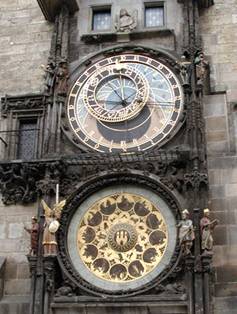 |
| History |
| Prague is situated
in the heart of Europe, on a place
that has been an intersection
of continental merchant routes
since time immemorial. It was
the seat of Czech princes and
kings from the tenth century A.D.
In the mid-14th century, Prague
was the centre of the Holy Roman
Empire and Europe's third largest
city in terms of population. As
part of the Hapsburg monarchy,
Prague remained the capital of
Czech lands, which became the
strongest part of the Austro-Hungarian
Empire in terms of economy during
the 19th century. Prague was developing
as an important centre where Czech,
German and Jewish cultures met
and mingled. Following the establishment
of the Czechoslovak Republic in
1918, Prague became the metropolis
of the new country. It experienced
a growth of its territory and
a great building boom. Following
the social and economic changes
in 1989, Prague enhanced its historically
strong ties with other cities
in Central Europe, and has gradually
been gaining a continuously improving
position within the continental
structure of big cities. |
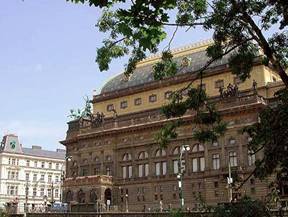 |
| Culture |
| Prague
also offers a wide range of musical
concerts, theatre venues, pubs
and restaurants to suit any taste
and budget. The
National Theatre is a member
of Opera Europa. The home-stage
of the Czech Philharmonic Orchestra
is Dvorak Hall in Rudolfinum. |
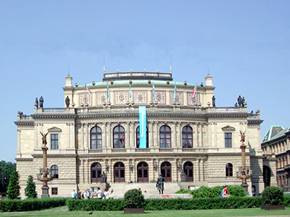 |
| Throughout
centuries prominent personalities
paid homage to it. W. A. Mozart,
L. van Beethoven, F. M. Dostojevsky,
A. Rodin, G. Apollinaire, P. I.
Tchaikovsky, O. Kokoschka and
also the British Queen Elizabeth
II and Pope John Paul II professed
their beguilement by its attractiveness
and architectural beauty. The
native town is reflected in the
works of Jan Neruda, Jaroslav
Seifert, Franz Kafka, Max Brod
or Egon Erwin Kisch. |
 |
| Prague
Gallery |
| http://old.hrad.cz/castle/obrazarna_uk.html |
| Shakespeare
Summer Festivities |
| Festival
of the most famous plays of William
Shakespeare; Burgrave of Prague
Castle, www.shakespeare.cz |
| Summer Old
Music Festivities |
| www.tynska.cuni.cz |
| City map of
Prague |
| http://www.hot-maps.de/europe/czech_republic/prague/homeen.html |